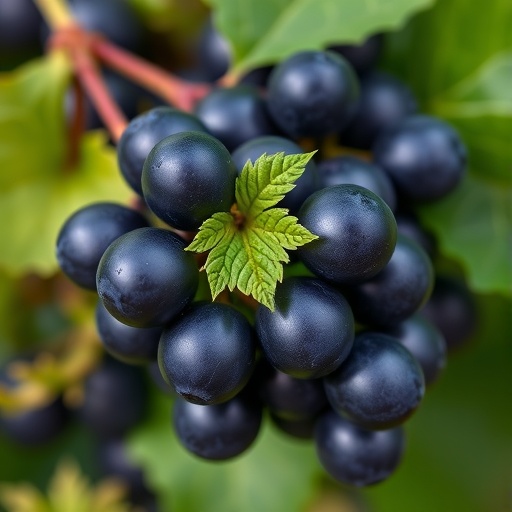Dublin, Ireland: Researchers investigating new treatments for neuroblastoma – one of the most common childhood cancers – have found that a combination of two drugs made tumours disappear in mice, making it more effective than any other drugs tested in these animals.
Professor Murray Norris, deputy director of the Children's Cancer Institute Australia for Medical Research, Sydney, Australia, told the 30th EORTC-NCI-AACR [1] Symposium on Molecular Targets and Cancer Therapeutics in Dublin, Ireland, today (Thursday) that the findings were unusual and highly significant. But he warned that it would be some time before the drug combination would be tested in children and, if successful, made available more widely to treat children with this disease, even though both drugs are currently undergoing clinical trial in a range of adult cancers.
Neuroblastoma is one of the most common childhood cancers and is the leading single cause of cancer deaths in children under five. It is frequently found in the adrenal glands on top of the kidneys. Despite using intensive treatment regimens, children with the most aggressive forms of neuroblastoma have less than 50% survival rates.
Prof Norris said: "To study neuroblastoma in the laboratory, we use a genetically modified neuroblastoma mouse model that closely recapitulates clinical features of the disease, and these mice spontaneously develop neuroblastomas within weeks after birth. We have found that when we combined CBL0137 and panobinostat to treat mice bearing neuroblastomas, the tumours disappeared and never came back during the entire experiment, whereas the tumours continued to grow in mice that received either no treatment or only single drug treatment.
"This is a highly significant finding as this drug combination is the most effective therapy that we have observed in this neuroblastoma mouse model. It is unusual to see this effect, especially in these mice where neuroblastoma develops within seven weeks of birth and is aggressive in nature. In fact, the CBL0137/panobinostat combination is more effective than any other current clinical chemotherapy combinations that our laboratory has tested in these mice."
CBL0137, which belongs to a new class of drugs called curaxins, attacks the structure of cancer cells but is a safe drug that does not damage DNA in normal cells. Prof Norris and his colleagues used RNA sequencing technology that can detect drug-induced changes in tumours, to see how the combination of CBL0137 and panobinostat stopped neuroblastoma growing.
"Our results suggest that these drugs work through two different mechanisms that offer a two-pronged attack. One of these mechanisms appears to be a direct attack on the cancer cells themselves, killing them by inhibiting DNA repair; then a second mechanism is involved in inducing a robust immune response. This is very exciting and will hopefully facilitate the clinical development of effective and non-toxic therapies for childhood cancer," he said.
"Unlike conventional chemotherapy drugs that interact with DNA, CBL0137 is non-DNA damaging and therefore is comparatively less toxic. Developing CBL0137 combination therapies has the potential to reduce acute and long-term side effects and increase the quality of life of children with cancer while extending the survival rates of these children. Another important implication is that the CBL0137/panobinostat combination can activate an immune response which may significantly boost the efficacy of immunotherapy drugs that are otherwise ineffective for neuroblastoma."
The researchers are continuing their laboratory work to investigate further how the combination of these two drugs activates the immune response, and to test CBL0137/panobinostat with other immunotherapy drugs in mice. A phase I clinical trial of CBL0137 in children with neuroblastoma and other difficult-to-treat childhood cancers is planned to start in 2019, following the completion of a phase I clinical trial of the drug in adults with solid cancers and previously treated blood cancers. The trial of CBL0137 alone in children will need to be completed successfully before a trial testing the combination of the two drugs can be planned, which means it will be a few years before it is known whether the treatment can be used more widely.
Further lab research by Prof Norris and his colleagues also showed that CBL0137 and panobinostat slowed the growth of aggressive childhood leukaemias in mice and significantly extended survival.
In addition to approving CBL0137 for phase I clinical trials in adults, the FDA has already approved panobinostat for multiple myeloma and it is being tested in clinical trials for a range of other cancers.
Co-chair of the EORTC-NCI-AACR Symposium, Dr James L. Gulley, who is Director of the Medical Oncology Service at the NIH / NCI Center for Cancer Research in the USA, and who is an expert in cancer immunotherapy but was not involved in this research, commented: "Although these are results from work conducted in mice, they are very interesting and suggest the exciting possibility that this drug combination might work more effectively than single agents in children with this rare but aggressive tumour. These are patients who desperately need better treatments. We await the results of the clinical trials with interest."
###
[1] EORTC [European Organisation for Research and Treatment of Cancer, NCI [National Cancer Institute], AACR [American Association for Cancer Research].
Media Contact
Emma Mason
[email protected]
@EuropeanCancer
http://www.ecco-org.eu




